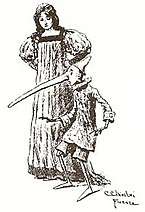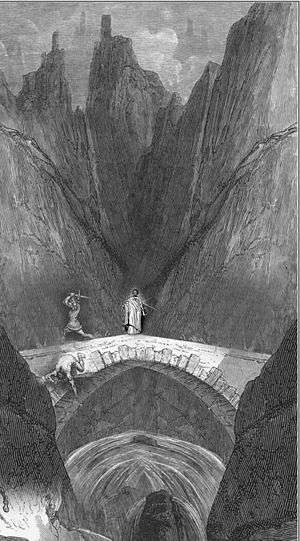Plato's beard
Plato's beard refers to a paradoxical argument dubbed by Willard Van Orman Quine in his 1948 paper On What There Is in which he stated that:
This is the old Platonic riddle of nonbeing. Nonbeing must in some sense be, otherwise what is it that there is not? This tangled doctrine might be nicknamed Plato's beard; historically it has proved tough, frequently dulling the edge of Occam's razor.[1]
The argument has been favored by prominent philosophers including Bertrand Russell, A. J. Ayer and C. J. F. Williams.[2] Declaring that not p (¬p) can't exist, one may be forced to abandon truisms such as negation and modus tollens.
Karl Popper stated the inverse. "Only if Plato's beard is sufficiently tough, and tangled by many entities, can it be worth our while to use Ockham's razor."[3]
The Indian philosophical system Vaisheshika has a distinct category called "Abhava" (non-existence). It deals with this concept in detail, classifying it into absolute, anterior, posterior and reciprocal non-existence. Similarly, the philosophy of Jean-Paul Sartre was famously preoccupied with the being of nonbeing, as evidenced by his best-known work, Being and Nothingness.
See also
References
- ↑ Quine, Willard Van Orman (1948).

- ↑ Vallicella, William F. (2002). A paradigm theory of existence: onto-theology vindicated. Springer. p. 112. ISBN 978-1-4020-0887-0. Retrieved 3 November 2010.
- ↑ Popper, Karl (1972). Objective Knowledge. Clarendon Press.
Further reading
- Durrant, Michael (1998). "Plato's Quinean Beard: Did Plato ever grow it?". Philosophy. 73 (1): 113–121. doi:10.1017/S003181919700003X. ISSN 0031-8191.
- Bunnin, Nicholas; Yu, Jiyuan, eds. (2004). "The Blackwell Dictionary of Western Philosophy". doi:10.1111/b.9781405106795.2004.x. ISBN 978-1405191128.
External links



